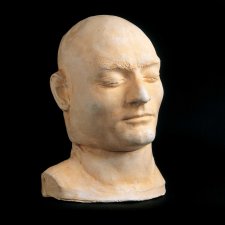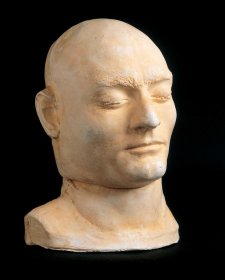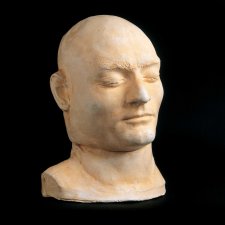- About us
- Support the Gallery
- Venue hire
- Publications
- Research library
- Organisation chart
- Employment
- Contact us
- Make a booking
- Onsite programs
- Online programs
- School visit information
- Learning resources
- Little Darlings
- Professional learning
William Baker Ashton (1800–1854) arrived in Adelaide with his wife, Charlotte, and their first three children in November 1838. A former soldier and member of the Bow Street patrol, and having risen to the rank of sergeant in London’s Metropolitan Police Service, Ashton had been appointed by the commissioners for South Australia to the role of Sub-Inspector of Police, one of two such officers tasked with establishing policing in the new colony. In January 1839, Ashton was appointed first governor of Adelaide Gaol, despite the prisoner population at this time being accommodated in a temporary stockade from which escapes were commonplace. In 1840, Governor George Gawler instigated the construction of a secure, sandstone prison building, the first half of which was ready for use by April 1841. Ashton served as the governor of the gaol for the next fourteen years and was assisted in his work by Charlotte, who worked unpaid for several years before officially being given the job of prison matron. The gaol became known during the period of their tenure as ‘Ashton’s Hotel’, perhaps because of William’s well-documented generosity to inmates, such as providing them with Christmas dinner each year at his own expense. Ashton was also known as a judicious manager and was commended in the press for the ‘efficient manner’ in which he performed his duties. He was the target of misconduct allegations nevertheless and in early 1854 was accused of transgressions including drunkenness, misuse of government property, trafficking with prisoners, stealing rations and withholding prison earnings. It was in the midst of the legal proceedings relating to these charges that Ashton died, as a result of cardiac failure, in April 1854. Adelaide Gaol is still held by some to be haunted by his ghost.
This watercolour is one of a number of depictions of Ashton by Henry Glover senior (c. 1810–1858), who emigrated to South Australia in 1848. In addition to his work as a publican, Glover produced paintings of Adelaide streets and scenes as well as portraits. The State Library of South Australia holds three of his portraits of William Ashton, including a group portrait titled The Governor and staff at the Adelaide Gaol 1850, which includes a portrait of Ashton’s son, Albert, who was his father’s ‘constant companion’.
Collection: National Portrait Gallery
Purchased 2011



On one level The Companion talks about the most famous and frontline Australians, but on another it tells us about ourselves.



Death masks, post-mortem drawings and other spooky and disquieting portraits... Come and see how portraits of infamous Australians were used in the 19th century.



Visit us, learn with us, support us or work with us! Here’s a range of information about planning your visit, our history and more!